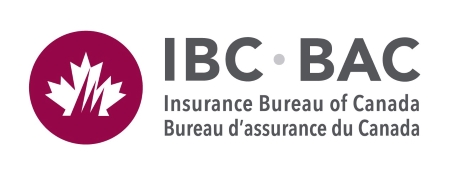Hamilton leads on adaptation to extreme weather by piloting new tool to plan infrastructure fixes and reduce basement flooding Français
HAMILTON, ON, Nov. 21, 2013 /CNW/ - Today the City of Hamilton and Canada's property and casualty insurance industry join forces to target infrastructure improvements in Canada's municipalities.
Together with Insurance Bureau of Canada (IBC), the City of Hamilton is launching a pilot project to use MRAT (for municipal risk assessment tool) to evaluate the city's sewer and stormwater infrastructure. This made-in-Canada technology is designed to help communities become more resilient to extreme weather.
Because of Canada's changing weather, communities now cope with more rain and snow, which can overwhelm vulnerable infrastructure never designed for today's needs. This can cause sewers to back up and basements to flood.
MRAT combines information - about infrastructure, climate and insurance claims - to produce maps that give city engineers a new and revealing picture of infrastructure vulnerabilities in 2013, in 2020 and in 2050.
MRAT will help municipalities identify vulnerabilities in their sewer and stormwater infrastructure and prioritize improvements to prevent sewer backups and keep basements dry. Click http://youtu.be/V9Z6kdMnTbs to see how MRAT works.
This view into the future will help cities identify vulnerabilities, prioritize repairs and leverage federal infrastructure dollars. The goal is fewer flooded basements.
"The City of Hamilton is proud and excited to be at the forefront of the MRAT project," said Hamilton City Manager Chris Murray. "MRAT is, without question, an innovative enterprise, not only of technology, but also of collaboration between local government and the insurance sector. Hamilton's involvement represents a continuation of our commitment to sustainable infrastructure and providing the best possible living conditions for our citizens."
The Canadian property and casualty insurance industry has also faced rapidly rising claims costs to repair flooded basements. Insured losses from natural disasters in 2013 - including the recent Alberta and Toronto floods - are about $3 billion, the highest in Canadian history.
"Hamilton and its leaders are to be congratulated for participating in the MRAT pilot," said Ralph Palumbo, IBC Vice-President, Ontario. "Piloting MRAT is a decision by Hamilton's civic leaders that says: let's use the best technology and let's take advantage of this innovative Canadian tool."
The MRAT pilot will roll out in Coquitlam, BC, Hamilton, ON, and Fredericton, NB, today, followed by several more communities across the country in 2014.
About the City of Hamilton
With a population of nearly 520,000, Hamilton is located at the western end of Lake Ontario in the Golden Horseshoe region. The City of Hamilton's long-term vision is to make Hamilton the best place to raise a child, promote innovation, engage citizens and provide diverse economic opportunities.
About Insurance Bureau of Canada
Insurance Bureau of Canada is the national industry association representing Canada's private home, car and business insurers. Its member companies represent 90% of the property and casualty (P&C) insurance market in Canada. The P&C insurance industry employs over 118,600 Canadians, pays more than $7 billion in taxes to the federal, provincial and municipal governments, and has a total premium base of $46 billion.
To view media releases and other information, visit the media section of IBC's website at www.ibc.ca. Follow IBC on Twitter @InsuranceBureau or like us on Facebook.
SOURCE: Insurance Bureau of Canada

or to schedule an interview, contact:
Kelly Anderson
Public Affairs Coordinator
Public Works Department
City of Hamilton
905-546-2424 ext. 1430
[email protected]
Ellen Woodger
Communications Consultant
Insurance Bureau of Canada
416-483-2358
[email protected]
Helen Lialias
Media Relations Officer
Insurance Bureau of Canada
416-362-2031 ext. 4312
[email protected]

Share this article